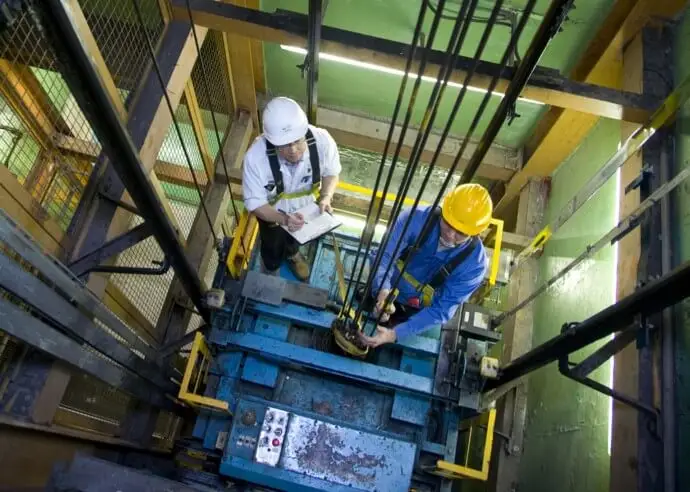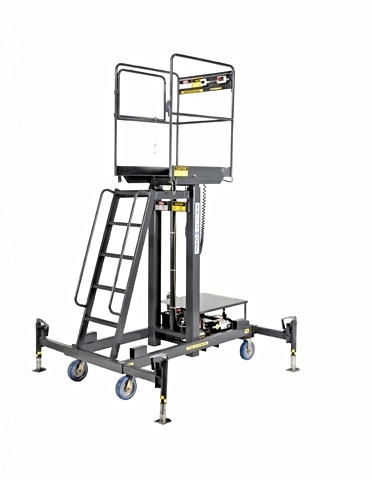Pro Tips for Maintaining Your Lift in Top Problem: A Comprehensive Introduction
Making sure the ideal functioning of a lift system is essential for a secure and efficient operation in various setups, from industrial stockrooms to business buildings. By adhering to an organized maintenance routine and preemptively attending to potential concerns, lift owners can alleviate pricey downtime and security hazards.

Significance of Regular Upkeep
Regular upkeep of your lift is essential to guarantee its ideal efficiency and longevity. By sticking to a normal maintenance timetable, you can recognize and deal with possible issues before they escalate right into pricey repairs or unexpected downtime. Routine upkeep jobs such as lubricating moving parts, checking for damage, and checking hydraulic systems can assist stop breakdowns and ensure risk-free procedure.
Disregarding regular maintenance not only compromises the efficiency of your lift but likewise postures safety and security threats to customers and building. Parts that are not properly preserved might fall short unexpectedly, resulting in mishaps or damages to the lift itself. Moreover, resolving concerns early on through maintenance can prolong the life expectancy of your lift and minimize the chance of significant failures.
In enhancement to boosting safety and security and efficiency, normal upkeep can likewise save you money in the future. By purchasing preventative upkeep actions, you can stay clear of expensive repair services or substitutes that may occur from overlooking the upkeep of your lift. In general, prioritizing routine maintenance is necessary for making the most of the functionality and longevity of your lift system.
Leading Parts to Examine

In addition, pay close focus to the lift's safety and security attributes, such as emergency stop buttons, security sensors, and interlocking devices, to ensure they are working appropriately. Routinely examine the lift shaft for debris or obstructions that could impede the movement of the lift vehicle.
Proactive Troubleshooting Techniques
When faced with potential lift system issues, adopting aggressive repairing strategies can dramatically boost functional effectiveness and avoid costly downtime. One of the vital positive fixing techniques is to routinely evaluate and monitor lift efficiency data. By tracking metrics such as lift rate, electric motor temperature, and power usage, maintenance groups can determine early indicators of prospective issues and take rehabilitative activities before they rise. Carrying out regular aesthetic evaluations of crucial parts, such as cords, sheaves, and safety devices, can also aid in finding deterioration or imbalances that might result in breakdowns. Furthermore, executing a preventative maintenance schedule that consists of lubrication of relocating parts, screening of emergency brakes, and calibration of sensing units can proactively deal with common lift system issues.
Moreover, investing in training programs for upkeep team on troubleshooting methods certain to the lift version installed can empower them to identify and settle issues quickly. By staying in advance of possible troubles via proactive troubleshooting, lift operators can guarantee a smoother and a lot more trustworthy operation while lessening the threat of unexpected break downs.
Necessary Lubrication Practices
Applying correct their explanation lubrication techniques is crucial for guaranteeing the smooth operation and longevity of lift systems. Regular lubrication helps in reducing friction between moving components, preventing wear and tear that can lead to pricey repairs and downtime. When it comes to lift upkeep, adhering to a rigorous lubrication timetable is important.
Choosing the best lubricant is the primary step in effective maintenance. Different components of the lift system might need specific sorts of lubricants, such as oil or oil. Consult the manufacturer's guidelines to establish the suitable lubricants for each and every part.

Deal with any type of concerns promptly to avoid more damages and ensure the continued smooth operation of your lift system. By focusing on correct lubrication practices, you can extend the life expectancy of your lift and enhance its efficiency.
Precaution for Lift Operators
In order to preserve a risk-free workplace and promote operational efficiency, lift operators need to carefully follow prescribed security protocols, alongside focusing on vital lubrication methods for ideal lift performance. Safety and this security steps for lift drivers are important to avoid mishaps and make sure the smooth performance of the lift system. Operators must go through thorough training on proper lift procedure, emergency situation treatments, and security guidelines. Routine equipment inspections and upkeep checks are critical to recognize and resolve any type of prospective safety hazards promptly. It is essential for drivers to constantly comply with producer recommendations for load abilities, functional limitations, and safety functions usage.
Additionally, lift drivers need to prioritize personal protective equipment (PPE) such as helmets, handwear covers, and harness when operating at heights or dealing with hefty loads. Clear interaction among operators, upkeep service technicians, and various other workers is essential to stop misconceptions that might bring about accidents. Finally, drivers ought to stay watchful, concentrated, and avoid diversions while running the lift to guarantee the security of themselves and others around.
Conclusion
Finally, keeping a lift in top condition is vital for making certain safety and security and efficiency in operations. Routine upkeep, thorough evaluations of crucial parts, aggressive troubleshooting, proper lubrication practices, and adherence to precaution are crucial for prolonging the lifespan of the lift and avoiding mishaps. By complying with these guidelines, lift operators can make sure the ongoing capability and safety and security of their tools.
By sticking to an organized upkeep routine and preemptively resolving possible concerns, lift proprietors can minimize pricey downtime and safety and security threats. Routinely examine the lift shaft for debris or obstructions that could restrain the activity of the lift auto.In order to maintain a secure functioning click here now atmosphere and support operational effectiveness, lift operators have to carefully adhere to recommended security procedures, alongside focusing on necessary lubrication techniques for ideal lift efficiency. Security steps for lift operators are vital to avoid mishaps and ensure the smooth functioning of the lift system. Regular upkeep, detailed evaluations of vital components, aggressive troubleshooting, appropriate lubrication practices, and adherence to safety and security actions are vital for extending the life expectancy of the lift and preventing crashes.